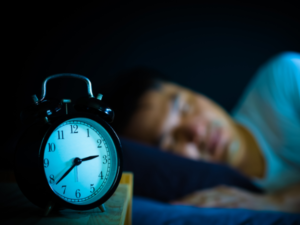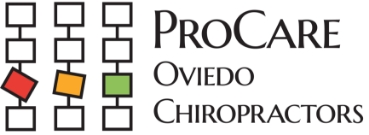What Lake Mary, Sanford, Longwood & Altamonte Springs Residents Need to Know About Back Pain and Sleep
Do you wake up feeling like you wrestled a bear all night, even though you were just in your own bed? You’re not alone. Many residents in Lake Mary, Sanford, Longwood, Altamonte Springs, and Oviedo wake up with back pain or neck stiffness—and one surprising culprit may be right under your head: your sleep position.
Back pain has many causes—stress, injuries, poor posture during the day—but since we spend nearly one-third of our lives sleeping, your nightly habits play a major role in spinal health. The good news? By improving your sleep posture and supporting your spine, you can prevent long-term problems. And if you’re already struggling, options like Chiropractic BioPhysics® offer lasting relief.
How Your Sleep Position Affects Your Spine
Your spine is like a stack of building blocks cushioned by discs. Good posture keeps everything aligned, but when you lie down, gravity still works against you. An unsupportive sleep position can create misalignment, muscle strain, and disc pressure—all while you sleep.
Let’s break down the best and worst sleep positions for spinal health.
1. Sleeping on Your Back: The Gold Standard
Sleeping on your back often provides the most natural spinal support.
Pros:
-
Keeps your head, neck, and spine aligned
-
Reduces neck and back pain
-
Can ease acid reflux
Cons:
-
May worsen snoring or sleep apnea
Tips to optimize back sleeping:
-
Use a thin pillow that supports your neck curve.
-
Place a small pillow or rolled towel under your knees to reduce lower back strain.
2. Sleeping on Your Side: A Good Choice (If Done Correctly)
Side sleeping is popular and generally healthy, but alignment matters.
Pros:
-
Reduces snoring
-
Recommended during pregnancy (especially left side)
Cons:
-
Can strain shoulders and hips
-
May cause neck pain if pillow height is wrong
Tips to optimize side sleeping:
-
Use a pillow thick enough to fill the gap between ear and shoulder.
-
Place a firm pillow between your knees to keep hips stacked.
-
Avoid curling too tightly into the fetal position.
3. Sleeping on Your Stomach: The Worst for Your Spine
If you’re a stomach sleeper with back or neck pain, this position is likely the cause.
Cons:
-
Twists your neck for hours, straining muscles and nerves
-
Increases lumbar curve, stressing your lower back
-
Can lead to long-term spinal issues
If you must sleep on your stomach:
-
Use a very thin pillow or no pillow under your head
-
Place a pillow under your stomach to reduce strain
-
Try to transition gradually to side or back sleeping
Short-Term Discomfort vs. Long-Term Damage
At first, poor sleep posture may just cause stiffness or aches. But over time, it can lead to:
-
Muscle imbalances that pull your spine out of alignment
-
Ligament strain leading to instability
-
Disc degeneration (bulging or herniated discs)
-
Joint dysfunction and reduced mobility
-
Spinal alignment problems such as loss of natural curves, “tech neck,” or hunchback posture
Since your spine houses your nervous system, these issues can also affect nerve function, energy, and overall health.
Why Your Mattress Matters
Your mattress plays a huge role in spinal health.
Too firm = pressure points, poor alignment for side sleepers.
Too soft = sagging, hips sinking, “U-shaped” spine.
Best option: a medium-firm mattress for most people.
Mattress types:
-
Innerspring: Firm and supportive but less contouring
-
Memory foam: Great for pressure relief but can trap heat
-
Latex: Durable, supportive, and responsive
-
Hybrid: A balanced choice with both support and contouring
Chiropractic Solutions for Back Pain in Lake Mary, Sanford, Longwood, and Altamonte Springs
If you’re already dealing with pain, simply changing your sleep position may not be enough. That’s where corrective chiropractic care comes in.
Chiropractic BioPhysics® (CBP®): A Proven Method
Unlike standard chiropractic care that focuses mainly on pain relief, CBP® is evidence-based and corrective. It restores your spine’s natural curves using:
-
Precise measurements & X-rays
-
Targeted spinal adjustments
-
Spinal traction therapy
-
Corrective exercises
Benefits of CBP®:
-
Relieves chronic back and neck pain
-
Improves posture and balance
-
Increases mobility and flexibility
-
Reduces nerve pressure, tingling, or numbness
-
Helps prevent future degeneration
Research-backed results:
-
A Spine Journal (2012) study showed spinal traction increased cervical curves in patients with disc problems.
-
A Journal of Orthopaedic & Sports Physical Therapy (2009) study confirmed corrective exercises improve long-term stability and reduce pain.
Get Lasting Relief at ProCare Chiropractic in Oviedo
If you live in Oviedo, Lake Mary, Sanford, Longwood, or Altamonte Springs and wake up with back or neck pain, don’t ignore it. Your sleep posture and spinal alignment could be at the root of the problem.
At ProCare Oviedo Chiropractors, we specialize in Chiropractic BioPhysics®—helping patients not just relieve pain but correct spinal misalignments for long-term health.
Call today or schedule your appointment online at ProCareFL.com



